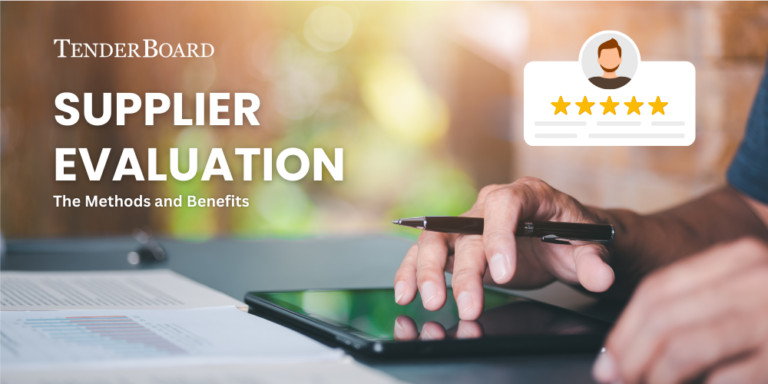eProcurement has revolutionised the way organisations approach the procurement process. By leveraging technology, eProcurement platforms can streamline procurement, reduce costs, and improve efficiency.
More and more companies across the globe are making the switch to eProcurement and experiencing these benefits. That said, it’s true there are some aspects of the procurement process that can’t be streamlined so easily – a fact that organisations need to consider when deciding whether or not to implement it. In this post, we’ll explore the parts of the procurement process that are instantly improved by eProcurement, and look at the top reasons some companies resist eProcurement.
eProcurement Basics
Electronic procurement, commonly referred to as eProcurement or online procurement, automates and optimises the procurement process. This involves the use of specialised software and online platforms to manage various procurement tasks, such as supplier sourcing, automated approval workflows, purchase order creation, and invoice matching. The eProcurement process starts with the identification of a need. Once the need has been clarified, a purchase request (PR) is created within the eProcurement system. The Source to Pay process routes the purchase request through all necessary approvals before being passed on to the procurement team – something that can be accomplished on the platform. Once approved, the procurement team can utilise an eProcurement platform to search for and evaluate potential suppliers. The selected supplier can then be managed through the platform, which automates tasks such as reminders, creating and issuing purchase orders, tracking deliveries, and managing invoices. Procurement software and platforms offer a range of features like supplier management, contract management, budget management, electronic bidding, and a vendor portal. Some eProcurement platforms provide real-time visibility into the status of purchases, purchase orders, and invoices, facilitating improved communication and collaboration among different teams and departments. Another key aspect of eProcurement software is integration with other accounting software or ERP platforms to make the process easier. Seamless integration helps streamline and optimise the process from start to finish, keeping all platforms a company uses on the same page.How eProcurement Streamlines the Procurement Process
Quicker Turnaround Times
Traditional procurement methods can often lead to lengthy purchasing cycles, primarily due to manual tasks. These manual processes require additional labour and can be difficult to coordinate, delaying purchases and slowing down projects. eProcurement allows organisations to take advantage of automation to streamline the process, leading to quicker turnaround times and removing much of the manual coordination.Cost Savings
Because eProcurement is more efficient and streamlined than analog procurement methods, there are plenty of opportunities to save on labour costs. In addition, eProcurement platforms can help to identify cost-saving opportunities through supplier consolidation and volume-based pricing. With the ability to manage procurement activities electronically and automate tasks, eProcurement can help organisations to achieve significant cost savings, contributing to the overall financial health of the business.Reduced Human Error
eProcurement helps to reduce human error associated with traditional procurement methods. With eProcurement, the procurement process is managed electronically, which reduces the need for manual touchpoints. This minimises the chances of error that may occur during manual data entry, such as typographical errors or incorrect calculations. eProcurement platforms also offer real-time visibility that enables quick issue identification and resolution, further reducing the potential for human error and delay.Improved Compliance
eProcurement platforms can help businesses to comply with company regulations and policies by providing automated tools for managing purchase requests and approval workflows. Necessary approvals for PRs or evaluations are automatically requested, with audit trail logs that track the workflow and comments. Platforms also offer 3-way matching for purchase orders, delivery orders, and invoices before payment is processed.Reasons Why Some Companies Resist eProcurement
Despite eProcurement’s many advantages, there are some who still prefer the traditional procurement process. Transitioning to eProcurement can meet resistance from more traditional suppliers, slowing adoption rates. This could strain supplier relationships and disrupt supply chains. Some eProcurement systems may also require suppliers to manage an account or would charge suppliers a fee to transact with you on the platform, which deters suppliers further. These barriers can potentially create logistical challenges and impede the overall efficiency of the procurement process. Manual procurement processes, despite their drawbacks, can at times allow for seemingly “easier” amendments. Changes such as modifications or corrections can be made swiftly in a manual process, often by simply cancelling something on paper. In contrast, eProcurement systems track amendments throughout the process, potentially necessitating approval processes as per company policies. This rigorous tracking promotes accountability and transparency, but it could also elongate the procurement timeline. Lastly, the success of eProcurement implementation is largely dependent on the vendor. It is imperative companies choose the right vendor from the start. While many organisations simply choose a well-known brand, this may not always be the best choice for the company. Organisations need a vendor who is willing to be intimately involved throughout implementation and provide enough support from kick off to go-live, and beyond.Choosing the Right eProcurement Solution in Singapore
There are a handful of eProcurement software solutions on the market. These solutions allow you to streamline the procurement process, easily connect with high quality suppliers, and proactively manage budgets and contracts. As you’re considering the right eProcurement software for your business, look for a platform that:- Supports customisable approval workflows and forms
- Makes it easy to manage your supplier list and work with your suppliers
- Digitialises and automates the grunt work of purchasing, sourcing and approvals
- Allows you to invite many or just 1 supplier to submit a quote
- Centrally manages communications with suppliers
- Integrate with your financial software or ERP for seamless procurement
- Will be implemented by a dedicated team who is committed to the success of the system













